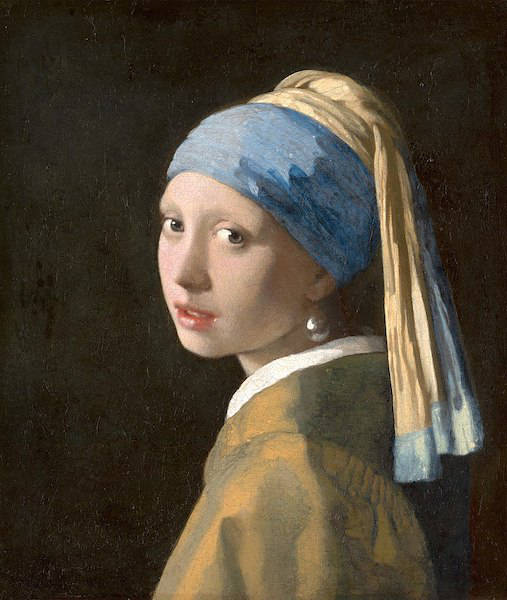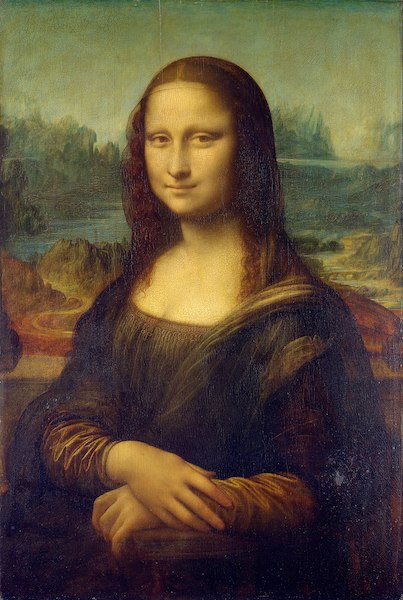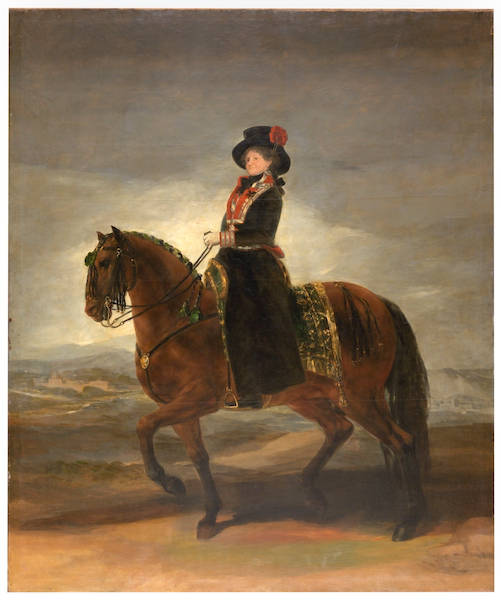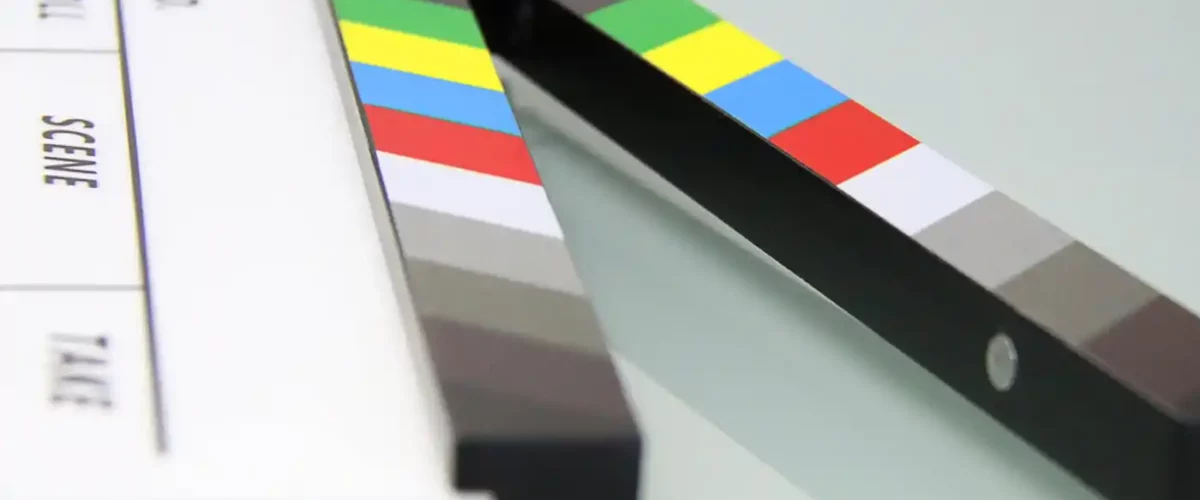It is no coincidence that the famous cinema theorist and avant-garde director Louis Delluc called cinematography “animated painting.” Directors, indeed, and often famous painting inspired cinema. For example, most recently, Wes Anderson’s film The Grand Budapest Hotel was released on a wide screen, in which the viewer was presented with two paintings created specifically for this movie: Boy with an Apple, in the style of the Italian Renaissance, English portrait painter Michael Taylor and work in the spirit of Egon Schiele by American artist and illustrator Rich Pelegrino. The house of Madame D is full of reproductions of paintings by Gustav Klimpt, her clothes are decorated with hand-painted in the style of Klimpt. We will present you five films that have won the hearts of viewers.
Girl with a Pearl Earring

Directed by Peter Webber
The first place in our list is occupied by the film directed by Peter Webber, beloved by the Russian audience, “Girl with a Pearl Earring”(2003). The film is based on the novel by Tracey Chevalier, in which the writer offers her own version of the creation of the famous painting by the Dutch artist Jan Vermeer “Girl with a Pearl Earring”. The painting was painted around 1665 and is kept in the Mauritshuis Museum.

Directed by Peter Webber
She is often referred to as the Northern or Dutch Mona Lisa. This painting is a mystery, as very little is known about it. We do not know if Vermeer painted the portrait to order, or is it a portrait of his daughter Mary, or a servant? Just the latest version and beat Chevalier and Webber. In 1665, sixteen-year-old Griet (Scarlett Johansson) takes the place of a maid in the artist’s house, gradually attracting the attention of Vermeer (Colin Firth) not only with her youth and purity, but also with her ability to feel painting. One day, he asks a girl to put on pearl earrings and pose for him for his new job.
About the portrait:

Girl with a Pearl Earring 1665
The portrait intrigues the viewer with its unusualness, the artist sought to capture the girl in motion. She, as if half-turned, directs her unusual look at the viewer. Vermeer focuses on the girl’s earring, and this earring is also found on other canvases of the artist, for example, “The Lady and the Servant”, “The Woman with the Lute”, “Portrait of a Young Girl”, etc. The sparkle of the earring is reflected in the eyes of the girl, on her lips.
The clothes of the heroine of the portrait are also interesting. On the girl’s head is a turban, a symbol of the Turkish faith. Such exotic elements have been used in Europe since the 15th century. Vermeer uses two fabrics, the first is bright blue, tightly fits the girl’s head, the second is yellow, falls gently and thus emphasizes the turn of the heroine’s head. The girl’s dress is yellow, and the collar is snow-white, which emphasizes the contrast of the image. The painting belongs to the genre called “tronie” in Holland in the 17th century.
In this genre, not a full-fledged portrait was depicted, but only the head of a person. The main thing in this genre is the unusualness of clothes and the mystery of the face, the main thing is that the viewer thinks about the thoughts and feelings of a person. In 1994, the painting was restored, returning to it the color and grace of the girl’s gaze.
The Da Vinci Code
The second place in our rating – occupied by the film directed by Ron Howard “The Da Vinci Code” (2006) based on the bestseller of the same name by American writer Dan Brown. In the story, Dr. Robert Langdon (Tom Hanks), a professor of religious symbolism at Harvard University, must unravel the murder case of Louvre curator Jacques Saunière. Saunière’s body found in the Louvre, naked and arranged in the same way as in the famous drawing by Leonardo da Vinci “The Vitruvian Man”. The inscription encrypted on Sauniere’s body indicates that the solution must sought in the works of Leonardo da Vinci. At the same time, Langdon meets Sophia Neve (Audrey Tautou). And together they have to unravel a lot of mysteries…

Directed by Ron Howar
Three pictures in the film play the role of keys:
Leonardo da Vinci’s first masterpiece “Madonna in the Rocks” (1483-1486), kept in the Louvre.

Madonna in the Rocks 1483-1486
The painting depicts the Virgin Mary kneeling, placing her hand patronizingly on the head of John the Baptist. On the right, an angel holds the baby Jesus, who raised his hand in a gesture of blessing. The delicate scene contrasts with the background of the painting. Brown’s book has its own interpretation of the masterpiece – an angel supports John, and Mary hugs Jesus, who worships John the Baptist. In the background are sheer cliffs. Because of them, the picture got its name.

Mona Lisa 1503-1519
The second masterpiece of Leonardo da Vinci is the mysterious and beautiful “Mona Lisa” , or “La Gioconda” (1503-1519). What versions do not exist about who depicted in this picture! Either this is a portrait of Mrs. Lisa Giocondo, or Cecilia Gallerani (a model of another portrait of Leonardo – “Lady with an Ermine”), or is it just an ideal woman, or not a woman at all, or, perhaps, a self-portrait of da Vinci himself. There many versions. It is obvious that the secret of Mona Lisa, which has been driving the audience crazy for several hundred years, has not been discovered, unlike the “Da Vinci Code” in the movie.

Directed by Ron Howar
One thing is clear – the Mona Lisa is one of the best examples of the portrait genre of the Italian High Renaissance.

The Last Supper 1495-1498
Leonardo da Vinci’s third masterpiece is The Last Supper (1495-1498). The fresco depicts the scene of Christ’s last supper with his disciples. Officially believed that the fresco depicts the moment when Jesus utters the words that one of the apostles will betray him, and the reaction of each of them. The figure of Jesus located and illuminated so that the viewer’s attention – drawn, first of all, to him.
The painting contains references to the number three: the apostles are sitting in groups of three, behind Jesus there are three windows, the contours of the figure of Christ resemble a triangle. The light in the picture does not come from the windows painted behind, but comes from the left, like the real light from the window on the left. In many places of the picture there is a golden ratio, for example, where Jesus and John, who is to his right, put their hands.
In the film “The Da Vinci Code” a different interpretation given to the image of the fresco. The heroes assume that Mary Magdalene depicted to the left of Jesus.
In general, art critics and employees of the Louvre reacted to Dan Brown’s book and, accordingly, to the film ambiguously. For example, representatives of the Louvre called the “version” of Brown “stretched” and the effect caused by the book – a parody of art history.
In any case, both the book and the picture drew the attention of the townsfolk to the masterpieces of Leonardo da Vinci and to the Louvre.
The Best Offer

Directed by Giuseppe Tornatore
“Best Offer”(2013), directed by Giuseppe Tornatore. An adventurous suspense thriller with a captivating story about “how to fool a liar”. Elderly art collector and lonely old auctioneer Virgil Oldman (Geoffrey Rush) receives a commission to appraise antiques from a mysterious client named Claire (Sylvia Hooks), who has agoraphobia and hasn’t left her house in the last twelve years. Oldman agrees to assess things and in the process of working he finds many mysterious mechanisms scattered throughout the house … A story with an unexpected ending, a story about human loneliness, about the eternal values of life, about love, about betrayal and, of course, about time. And the main character is a typical “man in a case”, closed from the outside world, having no friends, no family, living only among his paintings. And the room itself, in which masterpieces stored.

Directed by Giuseppe Tornatore
The picture contains a huge number of masterpieces. This, for example, is The Birth of Venus (1879) by William-Adolf Bouguereau.
Among the female portraits in his collection are “Portrait of a young woman (La Fornarina)” (c. 1519) and “Portrait of a young woman (La Muta)” (1507) by Raphael, “La Bella” (Beauty) (1536) by Titian, “Portrait of Eleonora of Toledo” (1560) and “Portrait of Lucrezia Panchatica” (1541) Agnolo Bronzino, “Portrait of Caterina Sforza” (c. 1490) Lorenzo di Credi, “Gypsy” by Boccaccio Boccaccino, “Portrait of a girl with a book of poems by Petrarch” (c. 1528 ) Andrea del Sarto, “Portrait of Bianca Capello” (c. 1572) by Alessandro Allori, “Portrait of Elisbeth Tucher” (1499) by Albrecht Dürer, and “Jeanne Samari in the decolletage (La Reverie)” (1877) by Pierre Auguste Renoir. There are also works by Lucas Cranach Sr., Peter Paul Rubens, Francisco Goya, Elisabeth Vigée-Lebrun, Dante Gabriel Rossetti and many others, no less well-known masterpiece.

Portrait of a Young Girl 1465-1470
“Portrait of a young girl” being restored in the fMasterpieces of painting in cinemailm(c.1470) by the Dutch artist Petrus Christus. Surprisingly, only in the 20th century this magnificent portrait recognized as a masterpiece. And they started talking about it as “pearls on black velvet” and began to remember Vermeer.
Despite the fact that the portrait depicts another girl, we understand from her look that she is from an aristocratic family, while, perhaps, spoiled by her parents, her lips testify to this. In the portrait, we can see traces of Gothic aesthetics: a high forehead, an ascetic background, clothes. By the way, art historians believe that the girl in the portrait dressed in the French fashion of the 1460s. The girl is like a doll. It is believed that this is a portrait of a girl from the Talbot family. It believed that this is one of the granddaughters of the famous John Talbot, 1st Earl of Shrewsbury, hero of the Hundred Years War, either Anna or Margaret.
Goya’s Ghosts
The film “Goya’s Ghosts”(2006) directed by Milos Forman. At first glance, it may seem that the film is about the greatest Spanish artist – Francisco Goya. But this is only at first glance. In fact, the main idea of the film lies elsewhere. The “ghosts” of the human soul, the opposition of good and evil, devotion and betrayal, virtue and vice. The heroes of the film are singles, they are “superfluous people” not only for that era, but for all eras combined.

Directed by Milos Forman
Goya (Stellan Skarsgaard) in the film is only a kind of “background” or “eyes” of events. Cinema makes a strong impression on the viewer. This movie is about humanism. On the screen we see the artist’s workshop. His work on famous engravings, the process of creating a portrait of the merchant’s daughter Ines (Natalie Portman) (who will accused of not being a Christian). Work on a portrait of the fanatical priest Lorenzo (Javier Bardem) (who will go over to the side of the French). Later the portrait of the priest will symbolically burned in the square. Goya is also working on a painting “Queen Marie-Louise on horseback” (1799).

Queen Marie-Louise on horseback 1799
Fifteen years after the beginning of the events described, Goya finds himself at the epicenter of historical upheavals. The great artist loses his hearing, but thanks God for not depriving him of his eyes, and Goya can capture what he sees.
Three more masterpieces appear in the scene when Napoleon’s brother Lorenzo and Napoleon’s brother Joseph, now the King of Spain, select paintings for Napoleon to add to his collection. The first picture that the viewer sees is “The Garden of Earthly Delights”(1500 – 1510) by the Dutch artist Jeroen Antonison van Aken, better known as Hieronymus Bosch. The central theme of the painting is about the sin of voluptuousness. In general, there are a lot of interpretations of the picture, but there is no consensus. Perhaps it was no coincidence that this particular work was presented to the audience first: it refers to the memories of the scenes of violence of brother Lorenzo over Ines, when the girl was already in custody.

The Garden of Earthly Delights 1500 – 1510
The second painting is The Family of King Charles IV (1800) by Francisco Goya. This work again sends the viewer into the past. Reminiscent of the royal family and the Spanish artist before he lost his sight, before the era of change.

The Family of King Charles IV 1800
The third picture – “Menins (maids of honor)”(1656), Spanish artist Diego Rodríguez de Silva Velazquez. Another name for the painting is “Family of Philip VI”. The painting depicts Velazquez’s atelier in the royal palace in Madrid, the artist paints a portrait of Philip IV and his wife Marianna. Their reflections are visible in the mirror that hangs on the far wall of the atelier. In the center stands the five-year-old Infanta Margarita, who apparently has just entered the atelier with her retinue.
Philip IV represents the fifth generation of Habsburgs on the Spanish throne, and they always married to someone from their family. This led to incest within the family, his only son Charles II was born an invalid. He became the last of the Habsburgs on the Spanish throne, after his death the War of the Spanish Succession broke out, which brought the Bourbons to power. Maybe, it is not by chance that the director shows this picture in the film third. Here – on the one hand, a hint of collapse, a change of power, on the other – a cheerful infanta – a symbol of the future.

Menins (maids of honor) 1656
In general, I would like to emphasize that Milos Forman approached Goya’s works thoroughly. Each artist’s painting shown as a symbol of time, events, “ghosts” of people, vices. The credits of the film are noteworthy, which must be watched to the end. Begin with a display of fragments of “black” paintings by Francisco Goya that make a terrible impression on the mind of the viewer. They named so for their gloomy coloring and plots reminiscent of nightmares. They written on religious or even mythological subjects, but for the most part this is a product of the artist’s imagination. Nothing like it was created at that time.

Directed by Milos Forman
The viewer sees fragments from the paintings “Festival in San Indira”, “Saturn devouring his son” (1819-1823), “Antronos or fate” (1819 – 1823),”Fantastic visions or Asmodeus” (1819 – 1823), “Two old men or an old man and a monarch” (1819 – 1823), “Fight with clubs” (1819 – 1823), “Witches Sabbath” (1819 – 1823), “Forge ” (until 1819). Then, in the credits, the viewer sees pictures of a slightly different plan.
This, for example, “Puppet” (1791 – 1792). Perhaps the director wants to show us not only the vicious and terrible sides of the human subconscious, but also the farce of life. The fact that we not always free to make any decisions. Maybe decisions are made for us. Then the viewer shown pictures that depict people – children, women, men. Another picture from the “black” works of the master shown, suggestive of “dark” thoughts. It’s famous”Dog” (1819 – 1823). The painting depicts a dog covered in sand. The symbolism is obvious – nothing lasts forever under the moon. The final touch of the credits is “Self-portrait” (until 1815).

Self-portrait” (until 1815)
So the movie is worth watching. It raises many eternal questions, shows life as it is: with its sins, horrors, injustices, virtues. Goya’s ghosts – human souls that imprisoned in “puppet” bodies, which, unfortunately, often manipulated by puppeteers.
Trance
The detective thriller Trance (2013), directed by Danny Boyle and written by Joe Ahearn and John Hodge, a remake of the 2001 TV movie of the same name. The plot of the film seems simple: auction house employee Simon (James McAvoy), along with accomplices, organizes the theft of Francisco Goya ‘s painting “Witches in the Air” (1798). But during the operation he gets a head injury and earns amnesia. He forgets where he put the picture. The bandits decide to hire a hypnotist, Elizabeth (Rosario Dawson), to help restore her memory. But not everything is so simple in this story…

Directed by Danny Boyle
The theme of the missing paintings runs through the entire film. It begins with a display of a missing Rembrandt painting.”Christ in the Storm on the Sea of Galilee” (1633). The seascape stolen in 1990 from the Isabella Gardner Museum and is still a wanted man. Simon says, “Rembrandt is in the picture. He’s at the epicenter of the storm, looking straight at us. But we don’t see it yet, because the painting was stolen. Many of the paintings were stolen and have not yet been found.”

The Storm on the Sea of Galilee 1633
During one of the hypnotic sessions, Simon with an unfamiliar pretty girl, wandering through the expanses of his subconscious. Wanders into a house where some of the missing paintings, including Rembrandt, exhibited. In his subconscious, these pictures were in place, they were safe.
In another scene in the film, Simon with Elizabeth at home, the hero reflects on Goya’s role in art: “There is a lot of flesh in the Sistine Chapel, but not a single hair. Hair reminds us of our biology, of our origins. But without them, everything is perfect and clean. But the art is evolving. You know, it’s all Goya’s fault. “Naked Maha”. There is always hair after her. Yes, that’s her. This is contemporary art.” Later, he throws a blanket over himself and tries to “attack” Elizabeth. And he says: “This is Goya. “Witches in the Air” I will attack you.”
However, in the end it turned out quite differently. And he failed to “attack” Elizabeth. Rather the opposite…

Witches’ Flight 1797-1798
It is no coincidence that the painting “Witches in the Air” was chosen for the abduction. Goya showed not only the real world, but also the human subconscious, dreams, nightmares. This work depicts a man who runs with a veil covering his head. In some ways, he also resembles the main character, who is trying to escape from his thoughts and fears.
Summery
We have covered only a few films in which there are masterpieces of painting. In fact, of course, there are many more. Recall Woody Allen’s wonderful film Midnight in Paris (2011), where there is a scene in which the famous Spaniard Pablo Picasso is working on his painting Bathers 4 (1928).
Pictures often inspire directors. There are films that resemble painting, and in the creation of which great masters took part. For example, in Alfred Hitchcock’s Spellbound (1945), the dream scene staged by the surrealist genius Salvador Dali. The dream scene is in itself like a kind of revived canvas of the artist.
More interesting articles related to art will be found in our blog section.
